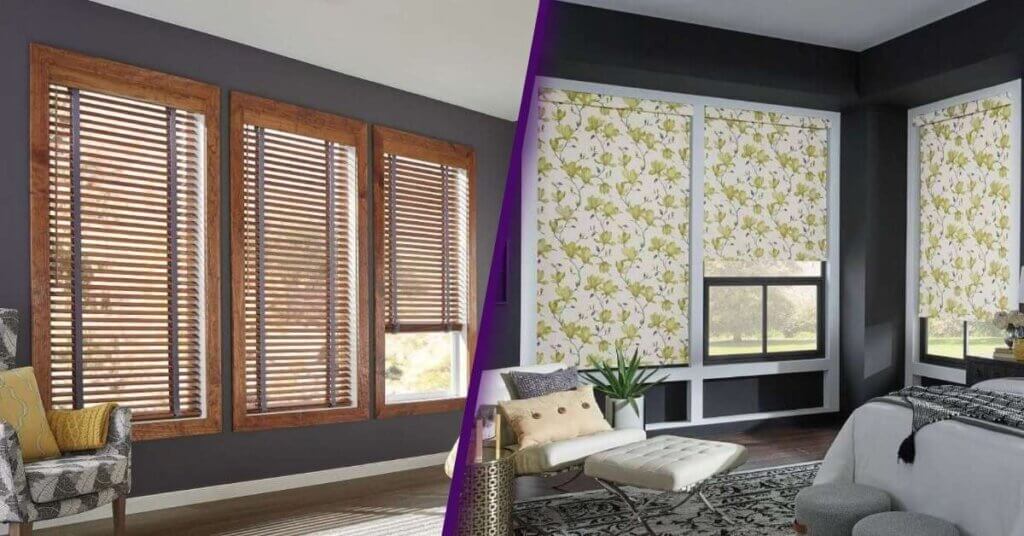When it comes to dressing your windows, the debate between shades vs. blinds is one that every homeowner eventually faces. Both window treatments can redefine how a space feels, functions, and filters light—but knowing which one fits your lifestyle and home design can make all the difference. In this blog, we’ll compare blinds and shades side by side, highlighting their strengths, style potential, and how they perform in real homes.
Whether you’re updating a beach house in Millville or refreshing your primary residence, this guide will help you make a confident, informed decision. By the end, you’ll know when it’s time to switch—and why one window covering might better suit your space, light, and privacy needs.
Blinds vs. Shades: What Sets Them Apart
Although the terms are often used interchangeably, blinds and shades have distinct characteristics that influence their appearance and functionality. Blinds are hard window coverings made of materials like wood, faux wood, or metal. They tilt open or closed to control light and privacy. Shades, on the other hand, are soft window coverings made from a continuous piece of fabric that rolls, folds, or stacks neatly when raised.
Blinds offer excellent light control and are easy to clean, while shades provide a softer aesthetic and better insulation. The choice often comes down to whether you prioritize functionality, texture, or ambiance.
Comparing Style and Design Options
Classic Appeal of Blinds
Blinds are known for their crisp, structured look. Options like wood and faux wood blinds bring warmth and natural tones, ideal for coastal homes near the Delaware beaches. Vertical blinds work well for sliding doors and wide windows, while mini blinds are ideal for compact areas that require simple light control. Their timeless look blends effortlessly with traditional or modern décor.
The Soft Sophistication of Shades
If your goal is to create a calm, elegant atmosphere, shades offer unmatched versatility. From sleek roller shades and energy-efficient cellular shades to decorative Roman shades, there’s a design for every interior. Shades can mimic the flowing style of drapery, softening a room’s edges while providing privacy and warmth.
Functionality and Performance
Light and Privacy Control
Blinds provide precise control with adjustable slats, allowing just the right amount of light in without compromising privacy. Shades, however, diffuse light more evenly, creating a cozy glow perfect for living rooms or bedrooms. Cellular shades are particularly effective at blocking heat and sound, making them a smart upgrade for homes in sunny Millville neighborhoods.
Energy Efficiency and Comfort
Shades, especially honeycomb or cellular designs, excel at insulation. They trap air in their layered cells, helping regulate indoor temperatures year-round. While blinds don’t offer the same thermal protection, they’re excellent at reflecting sunlight and keeping glare at bay—particularly in bright, south-facing windows.
Maintenance and Longevity
Easy-to-Clean Blinds
Blinds are low-maintenance, requiring only a quick dusting or wipe with a soft cloth. They resist fading and work well in high-traffic areas, such as kitchens or offices. Faux wood blinds, in particular, stand up to humidity, making them a smart choice for coastal Delaware homes.
Caring for Fabric Shades
Shades may need occasional vacuuming or spot cleaning, especially lighter-colored fabrics. While they require gentler care, their durability and ability to retain shape over time make them a worthwhile investment for homeowners who prioritize aesthetics and comfort.
Quick Comparison Table
Feature | Blinds | Shades |
Material Type | Wood, faux wood, metal | Fabric (woven, sheer, or opaque) |
Light Control | Adjustable slats for precision | Soft diffusion with lift options |
Insulation | Moderate | Excellent, especially cellular |
Design Versatility | Classic and structured | Soft, modern, and varied |
Maintenance | Easy to clean | Requires gentle care |
Style Meets Lifestyle
Choosing between shades vs. blinds often comes down to how you live. If you prefer sleek lines, quick adjustments, and durability, blinds are a great fit. But if you value warmth, softness, and energy savings, shades will transform your space into a comfortable retreat. Many homeowners also layer both—combining roller shades for softness and vertical blinds for function—to achieve balance between style and practicality.
For homeowners in coastal towns like Millville, where sunlight, humidity, and scenic views play a significant role in design decisions, the right window covering can enhance comfort while preserving the natural brightness of the home.
Key Takeaways
- Blinds offer precision light control and timeless structure.
- Shades bring warmth, softness, and superior insulation.
- Material and style preferences determine the right fit for your space.
- Maintenance needs vary—blinds are easier to clean, while shades need gentle care.
- Mixing styles can offer the best of both worlds in terms of function and design.
FAQs About Shades vs. Blinds
Q1. Can I combine blinds and shades in one room?
Yes. Many homeowners use both for aesthetic and functional benefits. For example, roller shades can provide softness and privacy, while wooden blinds add structure and depth. This layered approach allows greater flexibility in light control and texture.
Q2. Which is better for energy efficiency—blinds or shades?
Shades generally outperform blinds in terms of insulation, particularly cellular shades, which trap air within their honeycomb structure. However, blinds can still reduce heat gain by reflecting sunlight, especially those with lighter colors.
Q3. Are motorized options available for both blinds and shades?
Absolutely. Both can be motorized for convenience and safety, especially in homes with children or tall windows. Motorized shades are popular for their smooth operation and ability to integrate with smart home systems, giving you hands-free control at the touch of a button.
Ready to Upgrade Your Window Coverings?
If you’re still weighing shades vs. blinds, let the experts at Made in the Shade Eastern Shore help you make the perfect choice for your home. We offer in-home consultations across the Delaware and Maryland beaches, helping you compare options that match your light, privacy, and style preferences.
Book an appointment today and discover how custom window coverings can enhance every room—from your Millville living space to your coastal retreat.


